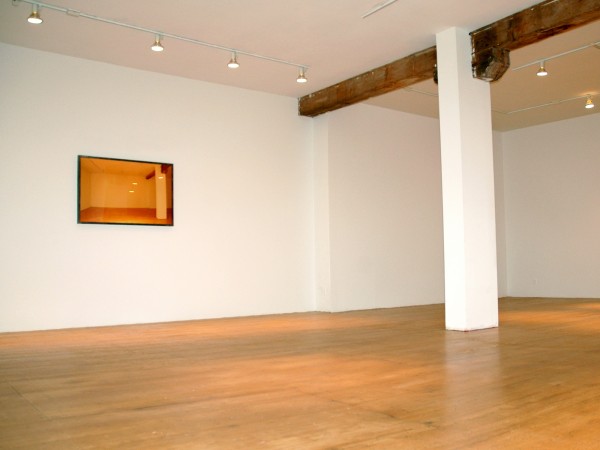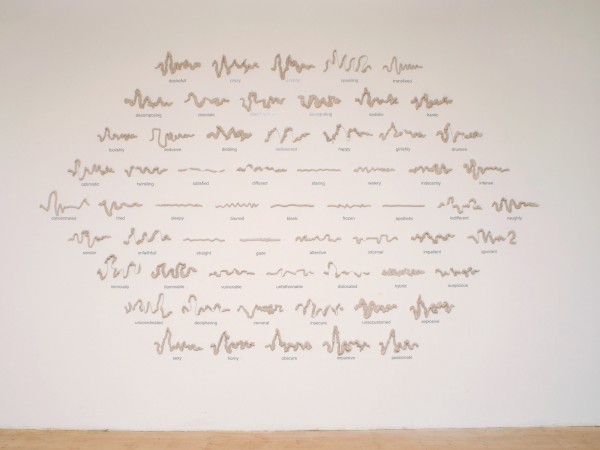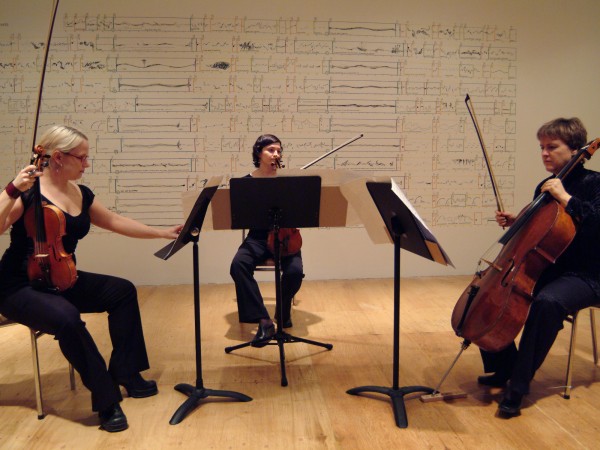“By architecture, I don’t just mean the city’s visible image and the whole of its architectures. It is rather about the architecture as a construction; I want to speak of the city’s construction throughout time.”1
Alfonso Arzapalo’s work Déjà fait proposes, through a synchronic image (an image made up of simultaneous events), to experience an artwork already in place but in constant transformation. In this work, the photographed location and the photography of this location are presented at the same time on the different planes of the shooting site. The artist has put together a course throughout the city punctuated by photographic fragments. Thus photographs act simultaneously in specific areas of the city. Arzàpalo pays special attention to the architecture in his work, which highlights the relationship between the individual memory of our experience and the collective memory of the monuments left by history.
Roaming the trace
In the course proposed by Arzapalo, I first went to the Champs-de-Bataille Park near the Quebec Citadel.
When I arrived I notice an object standing in the landscape; a rectangle on a metal rod. I approach it and notice on one of its planes, houses on Saint-Denis street, located behind the object. Strange impression of similarity and difference between the plans. Slight nuances between the luminosities. I move around the photo. Following the series of dwellings, the view opens on the scope of the St. Lawrence River and the South Shore, and then on the Citadel and later on a bird’s-eye view of the city, and finally, back to the homes and the picture placed in front of me. I look at it again, a man and a woman walk by, then I make my way to the next stop.
This place offers a strategic point of view on the river and the surrounding area, thus the presence of the Citadel built two centuries ago on the heights of the Cap-aux Diamants to defend the city. In that location, Arzapalo photographed a series of neoclassical houses located on Saint-Denis street. The photography planted in the turf creates a direct relationship with the subject. Thus, the photographic fragment opens on its environment in parallelism between the temporalities. The present coexists with the past, the fragment with the whole, and the instant with the duration of the course experienced in the urban fabric.
The artist confronts us with a conceptual photography which oscillates between the picture of the site, the site itself and the route that connects the various points. He offers an experience that takes place between the photographic, the “performative” and the architectural, while using photography as a time-based location to focus on fragments of architecture in a course within the city. The artwork already exists. Arzapalo marks locations and proposes stopovers. His course becomes our own. Each photographic fragment faces the whole of what was photographed and refers to the displacing that contains them.
Its increased attention to the urban space is transferred to us and leads to imagine the location we inhabit. The specificity of the site and the spatial arrangement of each photography influence our relationship with it as an object. The photography located the Champs-de-Bataille park creates a circular relationship and the steel rod acts as a pivot in the landscape while the photography placed in Square d’Youville installs a front-end rapport by an accumulation of successive layers. In Alfonso Arzàpalo’s work, the image is built up in the relationship between the photography, the photographed location and the course, to bring us to a different experience of photography. Thus his photographs of concepts and ideas as well as his increased attention to the urban fabric bring on an intensification of the daily routine. Through the journey, he inserts in the photographic moment a time in which the image is transformed. He works with the idea of landscape while a swaying occurs from one place to another in the proposed course. The souvenir of the visited locations lingers on to the next one. The landscape is fixed in the photography but is forever being transformed in the reality and in our memory. In this way, the mark that is the landscape acts as an eraser of the medium and provides a change of scenery. Time, movement, duration… To see the residents’ urban intervention as a component of the artwork. To think and document the ephemeral action because what remains is in the document and in the memory as an intention to break the boundaries between the art world and the living environment so that they cohabit.
I keep on walking. At the bend of a main roan, I again come across a photograph perched on a steel rod. Planted in a green lawn, it borders a wall of grey stones that carve up a blue sky. I’m thinking. My memory plays a trick on me. Temporalities get mixed up. Now I remember, the green lawn inhabits the photography, while the actual ground is covered with snow. That day, the pale grey sky, the dark grey wall and the white ground rather suggest a black and white photo. Thus, when I pass by, this colour photograph is etched in a black and white environment but recalls the warm and sunny day when it was shot. Fragment of the wall projects the materiality of the age of this stone, part of a wall of fortification which was built as early as 1608.
Thus, Arzapalo sets up a device that reveals a temporality of wandering in the sedimentation of layers of time. This accumulation finds itself concretely in the presentation of the photography on the site of its shooting and virtually in the path where we build the image. The wandering in the city etches the photography in a duration that lends to the image the possibility to build itself in time. This intimate rapport with the locations in the heart of the city and with the pieces of architecture reveals a story. The collective past meets the individual present of the experience. The image is shaped from a frame of personal and collective memories. The roaming in the city becomes the location of the event that exposes the architecture of the image and allows the visitor to inhabit it and to meet its time. In that place, there is access to the metaphorical structure of the image.
At the end of the pilgrimage proposed by the artist, I find myself in a white room, in an empty space where anything can happen. Somehow, the area becomes a metaphor of my experience facing the work and my interiority. Few elements make up the space: volumes of white walls and plywood floors, a beam and a wooden column. There is nothing and everything is there. I become aware of myself in this place, of my verticality compared to the axes of the transformation of the spatiality in relationship with my roaming the course. Then, I see a photograph hanging on a wall of the exhibition space. It redoubles the location and increases the awareness of my position in this space. The room is empty in the picture but fills up with presence as I stand facing my absence. Now, I inhabit this place that offers me a sensation of time and I become the difference.
The work of Alfonso Arzàpalo makes us face our life span.
Time surrounds us on all sides.
- Rossi, Aldo. 1984, The Architecture of the City. Cambridge: Massachusetts Institute of Technology, p. 7.



